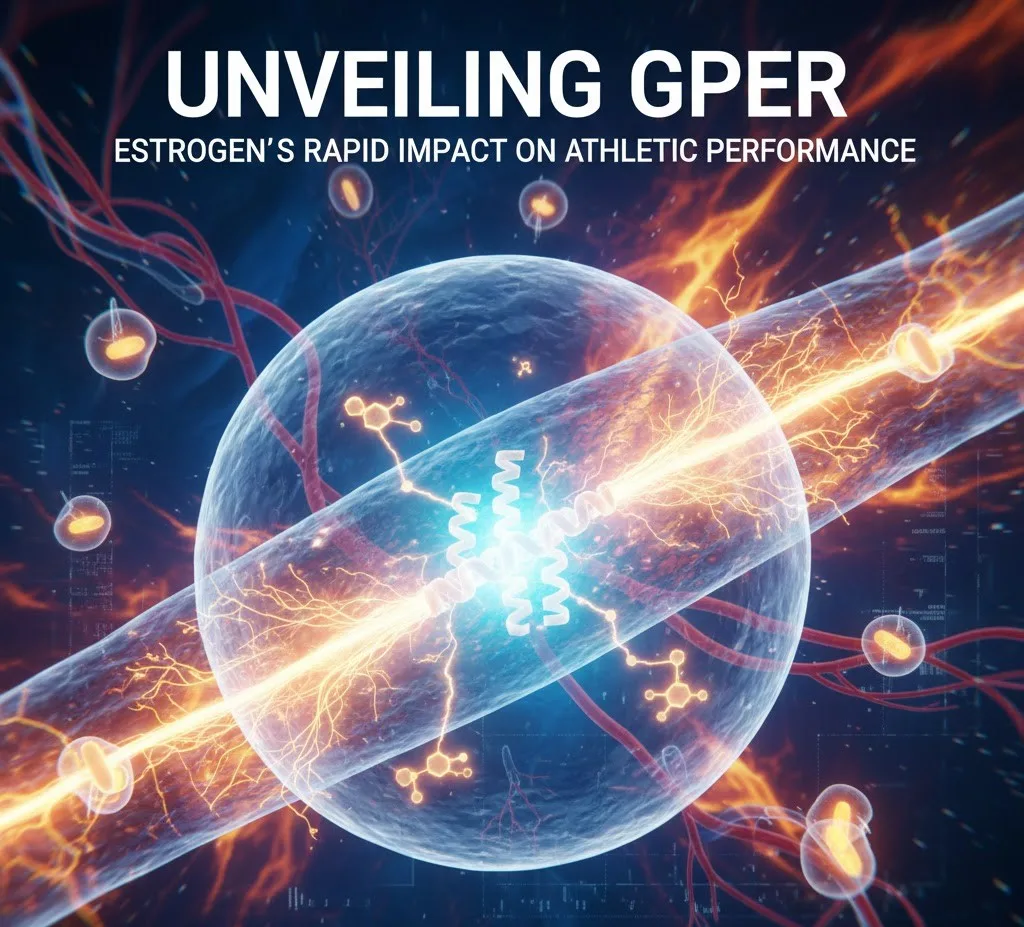For decades, the influence of estrogen on athletic performance, particularly in female athletes, has been a subject of intense research and discussion. Traditionally, the focus has been on classical estrogen receptors (alpha and beta), which operate primarily within the cell nucleus, modulating gene expression and influencing broad physiological changes related to muscle mass, bone density, and recovery. However, a "new" player is emerging from the cellular shadows: the G protein-coupled estrogen receptor (GPER), also known as GPR30. This receptor, located on the cell membrane, offers a fascinating new perspective on how estrogen might rapidly impact athletes.
Unlike its nuclear counterparts, GPER triggers rapid, non-genomic signaling pathways. When estrogen binds to GPER, it initiates a cascade of events that can influence various cellular processes within seconds to minutes, rather than the hours or days required for genomic effects. This rapid response mechanism is particularly intriguing in the context of sports, where immediate physiological adjustments can significantly impact performance, injury risk, and recovery.
The Rapid-Fire Impact: How GPER Might Influence Athletes
The implications of GPER signaling for athletes are still being fully elucidated, but research suggests several promising avenues:
-
Vascular Function and Blood Flow: GPER activation has been shown to induce vasodilation, the widening of blood vessels. This could translate to improved blood flow to working muscles during exercise, enhancing oxygen and nutrient delivery while facilitating waste product removal. For athletes, optimized blood flow could mean better endurance, reduced fatigue, and more efficient recovery.
-
Mitochondrial Function and Energy Metabolism: Emerging evidence suggests GPER may play a role in regulating mitochondrial activity, the "powerhouses" of the cell. Efficient mitochondrial function is crucial for energy production (ATP) and metabolic flexibility, directly impacting an athlete's ability to sustain high-intensity efforts and adapt to different fuel sources.
-
Inflammation and Recovery: Rapid signaling pathways influenced by GPER could potentially modulate inflammatory responses. While inflammation is a natural part of the healing process, excessive or prolonged inflammation can impede recovery and performance. Understanding GPER's role in mitigating or regulating exercise-induced inflammation could lead to novel strategies for faster athlete recovery.
-
Neuromuscular Function: Some studies hint at GPER's involvement in neural signaling. Given the critical interplay between the nervous system and muscle function in sports, GPER could potentially influence muscle contraction, coordination, and even pain perception, though this area requires much more investigation.
Bridging the Gap: From Lab to Field
The discovery and ongoing research into GPER represent a significant shift in our understanding of estrogen's multifaceted roles. For athletes and sports scientists, it opens up a new realm of possibilities. Future research will likely explore:
-
Sex-Specific Differences: How GPER activity and its effects might differ between male and female athletes, given the varying estrogen profiles.
-
Training Adaptations: Whether specific training protocols can modulate GPER expression or activity, thereby enhancing its beneficial effects.
-
Nutritional and Pharmacological Interventions: The potential for dietary components or targeted interventions to optimize GPER signaling for performance enhancement, injury prevention, or accelerated recovery.
While the classical estrogen receptors continue to be vital, GPER provides a thrilling new dimension to the story of estrogen and athletic prowess. Its rapid-acting nature suggests that estrogen's influence might be far more immediate and dynamic than previously understood, offering exciting new avenues for optimizing performance and health in the world of sports. The future of sports science may well involve a deeper dive into these fast-acting membrane receptors, unlocking new strategies to help athletes reach their full potential.

